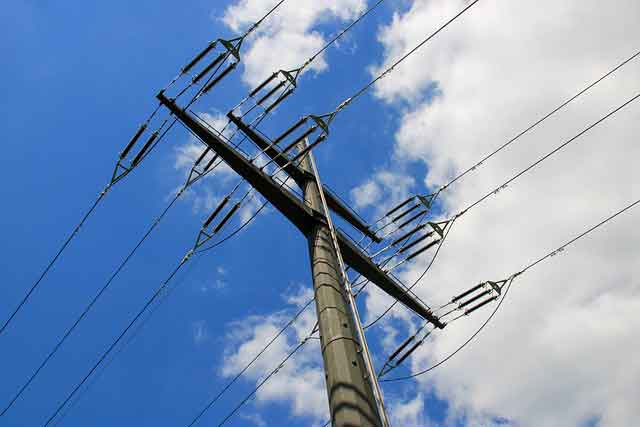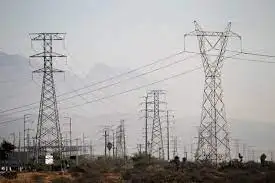Turning dirty garbage into clean fuel
By St. Catharines Standard
Substation Relay Protection Training
Our customized live online or in‑person group training can be delivered to your staff at your location.

- Live Online
- 12 hours Instructor-led
- Group Training Available
The former quarry on the border of Thorold and Niagara Falls has been force-fed the toxic stew of garbage for about 26 years.
It's a recipe for bad gas.
Left alone, landfill gas is continually belched into the environment. That's a bad thing, since the gas is explosive, smells like rotten eggs and contributes to global warming and smog.
It used to be a big, stinky problem for the landfill, not to mention its neighbours. But that was before landfill owner Walker Industries learned how to turn garbage gas into gold.
"We had an odour problem. We hired a series of consultants who studied the problem to death, but we eventually realized we were getting nowhere," vice-president Mike Watt said.
Then, Walker Industries hooked up with a Cambridge firm, Comcor, to form Integrated Gas Recovery Services (IGRS). The spinoff company specializes in capturing landfill gas and converting its methane into energy.
Their first project: collecting gas from the Walker landfill and piping it four kilometres to feed the boilers at Abitibi- Bowater's paper recycling plant in Thorold.
Some is also piped into a giant internal combustion engine to generate about a megawatt of electricity, which is sold to the provincial grid.
"What we're doing is turning an environmental problem into green energy," Watt said. "It's great from an environmental perspective - and we can make money off of it."
That's a huge change from just a few years ago, when the company burned money trying to stop odours and placate angry neighbours.
Now, buried trash all over the country is buried treasure.
IGRS was established in 2002, and the company has since tapped landfills across Ontario for about 20 megawatts of electricity, enough to power 20,000 homes.
The company boasts revenues of $10 million annually, and new projects in other provinces could double energy production.
That makes IGRS one of the biggest players in the industry in Canada, Watt said. He expects it to get bigger.
"It's a No. 1 priority for us going forward," he said. "We think there's a lot more opportunities out there."
That includes Niagara, but it won't be easy, said Darren Fry, project manager for landfill gas operations.
One of the primary rules of the game, Fry said, is "big is better."
Walker's private landfill fits the bill.
The grassy hill looming over the Walker Industries complex hides 20 million tonnes of garbage, and counting. That much garbage could easily burp more than 47 million cubic metres of gas into the air every year.
Instead, the gas is sucked out of 97 wells drilled into the landfill and mechanically scrubbed of sulphur and moisture. About 105 cubic metres of gas per minute is then pumped to AbitibiBowater - the same amount a gas furnace might use all winter.
The remainder, about 10.5 cubic metres per minute, is pumped into a 20-cylinder, 1,700-horsepower engine. What comes out is electricity, and the province pays 11 cents per kilowatt-hour to get it.
It's not always that simple.
"The smaller the landfill, the less gas you have, and the harder it is to make the economics work," Fry said.
Most municipal landfills are smaller than Walker Industries, including all 14 overseen by Niagara Region.
The Region would love to cut greenhouse gas emissions and make extra cash at the same time, said environmental monitoring program manager Jamie Kristjanson.
There are a few obstacles.
Some of Niagara's landfills are too small to vent very much gas. Others are too old, having digested and spewed most of their gas years ago.
Still, the four largest landfills produce nearly 40 million cubic metres of landfill gas every year.
The biggest, Glenridge's dump-turned-park, still produces 15 million cubic metres of gas annually, most of which is collected and flared on site to combat odour.
The problem: Walker Industries and the Region have tried - so far unsuccessfully - to turn that landfill's gas into cash ever since it closed eight years ago.
"I've got to admit, the project seems to have been a little cursed," Watt said.
The company first offered to pipe gas from Glenridge to a co-generation plant at Brock University in 1999.
When Brock opted out, the next plan was to harness the gas energy for the nearby Shaver Rehabilitation Centre. Ownership changes between Hotel Dieu and the Niagara Health System delayed the plan.
Then the manufacturer of the required generating engine went bankrupt last year. All the while, Glenridge's gas was slowly burning away for free.
"There's less everyday," Fry said. "The ideal time to start a project like this is a year or two before the landfill closes. It's been eight and counting."
As gas reserves fade, so does profitability.
But neither side has given up. IGRS has applied for federal funding to help cover the project's high capital costs. A lonely landfill gas engine even now sits on the lawn at Walker Industries, waiting to be used.
"We're still interested," Kristjanson said. "And Glenridge isn't the only opportunity."
Humberstone landfill in Welland and the Niagara Road 12 dump in West Lincoln are big, active landfills that could one day be tapped for gas.
"They're smaller than ours, but they're right in our backyard. It would be a shame not to make use of the resource," Watt said. "It's just the right business to be in right now, with the emphasis on green energy."
Using the words "green" and "landfill" together makes some environmentalists cringe.
The U. S. group Energy Justice argues burning landfill gas is dirty and potentially dangerous because of the nasty chemical contaminants typically found in the dump.
The gas can contain trace amounts of hundreds of chemicals and toxins like freon or mercury, according to Environment Canada. Burning the gas also has the potential to create new toxic compounds like nitrogen oxides, dioxins and furans.
However, Environment Canada studies to date suggest levels of all these substances in combustion emissions are minuscule, and not a threat to human health.
Watt added his company's generating engines "meet and exceed" provincial air emissions regulations.
Burning is also supposed to contribute less to global warming. Landfill gas is mostly made up of methane and carbon dioxide, two greenhouse gases. (Only methane is burned for energy.)
Methane is about 21 times more potent as a global-warming agent than carbon dioxide, and about one-quarter of all man-made methane comes from landfills.
Environment Canada estimates if half of all landfill gas produced in Canada was combusted, it would mean a greenhouse gas reduction equivalent to six million tonnes of carbon dioxide annually.
Simply flaring landfill gas on site, as is done at Glenridge, would also do the trick.
But Watt considers that a waste. More landfill gas energy means less need for coal-fired power, he said.
"If you let it vent, or just flare it, you don't get the benefit of replacing dirtier forms of electricity," he said.
Walker Industries expects to get 20 to 30 years of useable gas out of its own landfill. Glenridge, even now, could be tapped for 10 to 20 years, Watt said.
But he acknowledged garbage power has a limited lifespan in Ontario.
Landfills aren't popular and recycling advocates aim to make them history.
A new focus on composting will also mean less organics in the dump - the main ingredient for methane production.
But while landfills exist, so will landfill gas. "It doesn't make sense, environmentally or economically, not to use it," Watt said.











